止疼藥瘟疫愈烈,藥企巨頭麥克森無辜還是有罪?
在美國西弗吉尼亞,飽受藥品濫用打擊的社區將麥克森告上法庭。疑點重重的訂單直指一場規模浩大的瘟疫。

|
在美國西弗吉尼亞,飽受藥品濫用打擊的社區將麥克森告上法庭。 去年秋天一個晚上,西弗吉尼亞麥克道威爾縣本地新聞提到濫用止疼藥危機日益嚴重,電視前的警長兼會計馬丁·韋斯特終于忍無可忍。新聞里提到的內容讓他感到極為憤怒。 62歲的韋斯特同時擔任縣里的牧師,因而目睹過很多慘劇。他在麥克道威爾縣出生成長,活了一輩子卻只能眼睜睜看著家鄉不斷衰退。韋斯特年輕時,麥克道威爾縣還是個繁榮的小地方,位于西弗吉尼亞最南端卻是整個州的產煤中心。1982年之前韋斯特一直在煤礦工作,之后下了崗。29歲時他當選縣治安法官,一當就是27年,后來當選為警長。他負責過很多案件,發現越來越多當地人因濫用藥物而一蹶不振而且陷入赤貧,濫用止疼藥之風逐漸蔓延。 |
The company is facing lawsuits from devastated communities in West Virginia. One evening last fall, Martin West finally reached his breaking point. The sheriff and treasurer of McDowell County, W.Va., was watching the local news when a report about the deepening opioid crisis came on. What he learned that night incensed him. West, 62, is also a pastor in his community, and he has seen a lot of suffering. He was born and raised in McDowell County, and over his lifetime he’s borne witness to its inexorable decline. In his youth it had been a prosperous place. The southernmost county in West Virginia, it was at the heart of what was then the state’s booming coal country. West himself worked in the mines until 1982, when he was laid off. At 29 he was elected to be a county magistrate. And for 27 years, before he was elected sheriff, he presided over court cases—ones that increasingly involved the stories of lives undone by drugs and poverty, and of an opioid epidemic taking root. |

|
過去十五年間,麥克道威爾縣因濫用處方止疼藥死亡的人數越來越多,在美國所有縣排名第二(僅次于旁邊的懷俄明縣)。韋斯特認識的很多正常人都卷入其中。有些人因為失業開始嗑藥,有些人因為受傷吃止疼藥上癮。他認識有些一家人全因濫用藥物死亡。身為牧師,他安葬了不少受害者。作為警長,他也抓了不少人。作為會計,他發現根本沒有資源改變現狀。縣里一個戒除藥癮的康復中心都沒有,也沒有足夠人手處理所有與藥物相關的投訴。(去年他手下的15個人解雇了5個。)“每個星期都有人死亡,”韋斯特說。“讓人非常遺憾。” 但最讓他憤怒的就是那晚新聞中提到小鎮沃爾,麥克道威爾縣底下一個只有800人的小鎮。新聞里解釋了為何沃爾會出現大量處方止疼藥,數量遠超當地人合理安全的使用水平。維斯特得知,止疼藥是由幾家規模巨大盈利極高,負責在全國銷售處方藥的大公司送到沃爾的。 |
Over the past decade and a half, McDowell has lost people to prescription opioid overdoses at a higher rate than any other county in America but one (its neighbor, Wyoming County). And West knows plenty of good folks who have been caught up in the epidemic; those who lost their jobs and turned to drugs, and others who were injured and then got hooked on the pain meds prescribed to them. He can cite whole families who have died in the epidemic. As a pastor, he has buried many of its victims. As sheriff, he’s locked them up. And as treasurer, he has learned he lacks the resources to make things much better. The county doesn’t have a single drug-rehabilitation center, nor does it have the deputies needed to respond to all the drug-related complaints. (He had to lay off five of his 15 men last year.) “People are dying every week down here,” says West. “It’s a shame what’s happening.” But what got him boiling mad was the news report that night highlighted War, an 800-person town in McDowell County. It explained how War had come to be flooded with far more prescription pain medicines than its population could ever reasonably or safely consume. The medication had been shipped there, West learned from the news, by a handful of extremely large, highly profitable companies that distribute prescription drugs across the country. |

2017年《財富》500強榜單上麥克森排名第五。?
|
韋斯特對濫用止疼藥的滿腔憤懣終于找到了發泄對象:所謂的零售商。“在我看來,這些零售商跟街邊毒販沒什么兩樣,”他告訴《財富》雜志。這位警長希望走刑事訴訟,即便做不到也要想辦法讓藥企做出些補償。去年12月,麥克道威爾縣成為州里第一個向“三大”藥品經銷商提起訴訟的,三大是指今年在《財富》500強里排名第五的麥克森,年收入達1920億美元;500強排名第11的美源伯根公司,年收入1470億美元,還有500強排名第15的卡地納健康集團,收入1220億美元。三家公司都否認了指控,聲稱遵守了所有相關法律,而且在跟當局努力解決藥物濫用問題。 不僅韋斯特將目標指向藥品經銷商的同時,公眾對藥品行業在處方藥經銷的關注也在增加,而且對西弗吉尼亞的亂象非常憤怒。去年《查爾斯頓郵報》記者埃里克·艾爾揭露出驚人的細節,系列報道后來榮獲普利策獎,其中艾爾列出了一組令人震驚的數據,從中可見醫藥行業運送到西弗吉尼亞的藥品數量,也是醫藥公司拼命想捂住的事實。 數字令人難以置信:2007年到2012年間,隨著全國濫用止疼藥失控,藥品經銷商運向西弗吉尼亞的止疼藥共計7.8億片,也即當地的男性、女性和小孩人均433劑。據《查爾斯頓郵報》分析,僅三大藥企就占了一半還多,約4.23億片。 |
West now had a new target for his frustration about the growing toll of opioids: the so-called wholesalers. “In my thinking, they were no different than drug dealers selling on the street,” he tells Fortune. The sheriff wanted a criminal prosecution, or failing that some compensation from those companies for the damage they’d done. In December, McDowell became the first county in the state to file a lawsuit against the “big three” drug distributors: McKesson (mck, -0.01%), No. 5 on this year’s Fortune 500, with $192 billion in revenue; AmerisourceBergen (abc, -0.38%), No. 11, with $147 billion; and Cardinal Health (cah, +0.32%), No. 15, with $122 billion. All of the companies deny the charges and say that they comply with all relevant laws and are working with authorities to prevent abuse in the system. Sheriff West took aim at the wholesalers at a moment of growing focus on the industry’s role in prescription drug distribution and outrage about what it had done in West Virginia. Damning details emerged late last year thanks to Eric Eyre, a reporter at the Charleston Gazette-Mail. In a Pulitzer Prize–-winning series, Eyre published a staggering set of data—some of which the industry fiercely fought to keep under court seal—revealing just how many opioids the industry had delivered to the state. The numbers are hard to fathom: Between 2007 and 2012, as the nation’s opioid epidemic spiraled out of control, wholesalers collectively shipped 780 million pain pills to West Virginia—or 433 doses for every man, woman, and child there. The big three alone delivered more than half of those, according to the Gazette-Mail’s analysis: some 423 million pills. |

|
其中小城市的比例奇高。西弗吉尼亞小鎮吉爾伯特(人口433人)最近向藥品經銷商提起訴訟。起訴書中顯示,2007年到2012年間藥企向該地運送了533.197萬劑氫可酮和氧可酮。 濫用止疼藥之風在全美各處蔓延,不只是西弗吉尼亞。現在美國人死于藥物濫用的幾率很可能比死于車禍要高。2015年因濫用止疼藥致死案為每天91例,還有很多人掙扎在生死邊緣。每天都有超過1000人因濫用處方止疼藥在急診接受治療。1999年以來止疼藥銷售增長幾乎翻了兩番。估計的數字是約有250萬人在跟濫用止疼藥成癮抗爭。 過去這些年里,藥物上癮的人要么接受指責,要么就是同情。隨意開出處方藥的醫生受到嚴厲指責。一些生產止疼藥的藥企,例如奧施康定的普渡制藥更是千夫所指。如今人們也開始追究藥品經銷商的責任。 業內巨頭麥克森不可避免地被推上風口浪尖。 |
Small cities were disproportionately flooded. The West Virginia town of -Gilbert (pop. 433), recently filed its own lawsuit against the distributors. In its complaint, the municipality alleged that between 2007 and 2012 it was shipped 5,331,970 doses of hydrocodone and oxycodone. America is suffering through a full-blown opioid epidemic—and it’s hardly confined to West Virginia. It is now significantly more likely that an American will die of a drug overdose than in a car crash. In 2015 opioid overdoses claimed 91 lives a day in the U.S. Many other users hover on the edge of survival. On a typical day, more than a thousand people are treated in ERs across the country for misusing prescription opioids. Since 1999 the amount of opioids sold almost quadrupled. It’s estimated that some 2.5 million struggle with addiction to prescription opioids. The people who have fallen under the sway of addiction have been blamed or sympathized with over the years. The doctors who casually prescribe the meds have been criticized. The companies that make the opioids, such as Purdue Pharma (the seller of OxyContin) have been lacerated. Now the distributors are being called to account. That applies perhaps most of all to the giant of the industry: McKesson. |
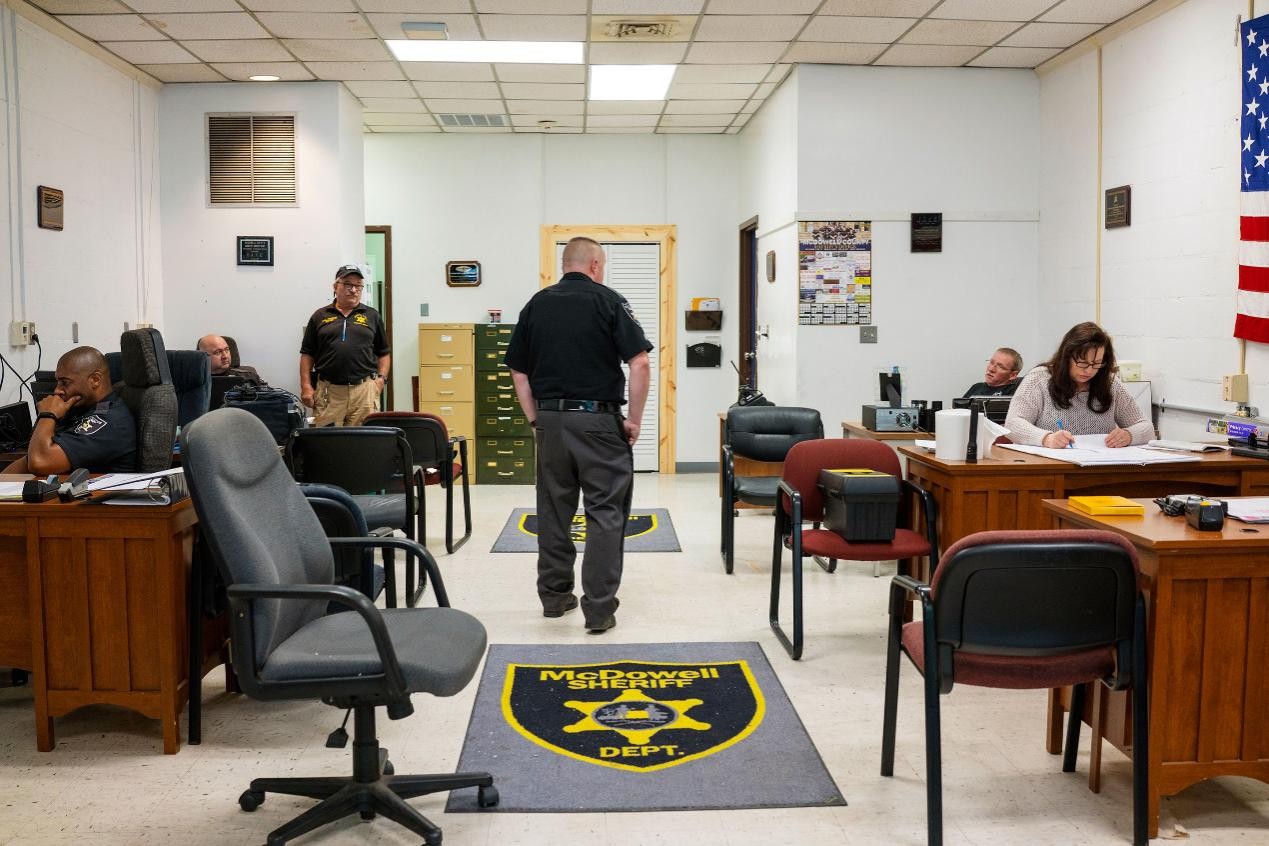
|
司法部1月宣布,因2008年到2013年間麥克森向部分地區運送大量極容易上癮的止疼藥可疑訂單,卻未向美國緝毒局警示,已達成1.5億美元的和解協議。這筆罰款為有史以來金額最高,此前的12月司法部與卡地納健康也就類似指控達成和解協議,金額為4400美元。而且麥克森此前就觸犯過聯邦法律。2008年麥克森因類似指控被罰1325萬美元。麥克森與司法部剛剛達成的協議顯示,接下來五年麥克森將嚴格遵守和解協議,而且要接受獨立監督。(麥克森和卡地納健康都表示將遵守相關法律,化解爭議跨越分歧,與政府部門保持密切合作。) 除了麥克道威爾縣的指控,麥克森還面臨2016年西弗吉尼亞首席檢察官帕特里克·莫瑞斯提交的訴訟。該指控稱2007年至今,麥克森未能識別、匯報并阻止向西弗吉尼亞運送的止疼藥可疑訂單,違反了該州管制藥品法。麥克森已出庭應訴。 今年1月三大藥企中另外兩家也與西弗吉尼亞州和解了漫長的訴訟,不過兩家企業都未承認有不法行為。卡地納健康同意支付2000萬美元,并發表了以下聲明:“本公司否認指控,卡地納健康認為處方藥濫用是由成癮和需求催生的問題,要從多方面考慮。”美源伯根同意向西弗吉尼亞支付1600萬美元。在西弗吉尼亞代表美源伯根的律師阿爾·艾姆什表示,“我們的工作就是打造安全可靠的系統,確保從藥企合法購買藥物,安全送達后合理服用。” 隨著公眾和政界聲討濫用藥品的聲浪高漲,不管是和解協議還是藥品傾銷的指責都導致此前低調的藥品批發行業如坐針氈。不過有關藥品經銷商在藥品供應鏈中的角色討論并非第一次。事實上,過去十年里就藥品監督職責,該行業與美國緝毒局一直有摩擦。 如今隨著危機愈演愈烈,麥克森跟同行們也益發感覺受到誤解和不公平的指責。藥企認為自己是美國醫療系統中的無名英雄,默默無聞又高效可靠地將必要的藥品送到需要的地方。企業總結出很多不該承受職責的理由,說到底就是“嘿,我們只是中間人而已。” |
In January, the Department of Justice announced that McKesson had settled, for $150 million, civil claims that from 2008 to 2013 the company had failed to warn the DEA about the large number of suspicious orders of highly addictive painkillers it had shipped to certain parts of the country. The penalty is the largest of its kind against a wholesaler, greatly exceeding a $44 million settlement the Justice Department reached with Cardinal Health in December on similar charges. And McKesson had run afoul of the feds before. In 2008 the distributor settled similar allegations for $13.25 million. According to the terms of its recent deal with the Justice Department, McKesson will operate under a heightened compliance agreement and the watchful eye of an independent monitor for the next five years. (McKesson and Cardinal Health both say they follow relevant laws and that they resolved claims to move beyond disagreements and work more closely with the government.) On top of the suit by McDowell County, McKesson is now facing a lawsuit brought in 2016 by West Virginia Attorney General Patrick Morrisey. That suit alleges that the distributor failed to identify, report, and stop the shipment of suspicious orders of opioids in the state from 2007 to the present in violation of West Virginia’s controlled substances act. McKesson is fighting the charges in court. The other two members of the big three in January settled long-running lawsuits with the State of West Virginia over alleged violations, though neither admitted wrongdoing. Cardinal Health agreed to pay $20 million to the state and issued this statement: “While the company denies the state’s allegations, Cardinal Health recognizes that the epidemic of prescription drug abuse is a multifaceted problem driven by addiction and demand.” And AmerisourceBergen agreed to pay West Virginia $16 million. Says Al Emch, an attorney who represents AmerisourceBergen in West Virginia, “Our job is to create a safe, dependable system to take these drugs that we purchase from the manufacturer and deliver them securely.” The settlements and pill-dumping allegations have put the previously low-profile wholesaling industry in the hot seat just as public and political outrage over the opioid epidemic reaches a fever pitch. But it’s hardly the first time questions over the role of distributors in the pharmaceutical supply chain have been raised. Indeed, the industry has sparred with the DEA for much of the past decade about the role it should play in monitoring the delivery of drugs. Today, as the crisis continues to spiral, McKesson and its peers feel misunderstood and unfairly targeted. As they see it, they’re unsung heroes in the American health care system—the quiet, efficient, reliable machine that gets essential medications where they need to go. They offer elaborate reasons for why they’re not to blame, which boil down to “Hey, we’re just middlemen.” |

|
當前情況下,止疼藥生意無疑很難平衡。“不賣最簡單,但現實是確實有人需要,”長期擔任麥克森首席執行官的約翰·哈默格倫表示,他一直強調麥克森希望做正確的事。“我們之所以分發這些止疼藥物,是因為很多病人對藥品有合理需求,開具診斷的醫生也都是專業知識豐富且出于好意,都是為了病人考慮。” 事實上,濫用止疼藥危機是一場龐大的集體失敗,沒人真正了解危機的實質,等到了解卻為時已晚。醫藥企業不明白,當然有時也不愿意了解止疼藥可能的危害,直到濫用肆虐才察覺。醫生開藥病人拿藥時,藥劑師并未保持必要的警惕。雖然出現各種警示信號,但美國緝毒局一直在提高處方止疼藥藥物的限額,直到2013年才停止。也有人表示,如果緝毒局真的阻斷供應情況只能更糟,上癮的人會轉向海洛因。 美國之所以止疼藥蔓延,麥克森之類藥品經銷商確實有責任。為了進一步了解現狀成因,也為了考察企業行為對某些受創最嚴重地區的影響,《財富》雜志深入研究了麥克森與止疼藥類藥物的歷史糾葛。我們采訪了禁毒官員、行業高管、檢察官,還有在一線對抗危機的西弗吉尼亞居民。 可以明確的是,肯定不完全是麥克森的錯。但離開藥品經銷商也不可能出現濫用蔓延。 麥克森內部有個激勵人的說法特別流行。公司總部,還有經銷中心入口上方都能看到:“藥品不是普通的貨物,每一份背后都是病人的期待。” 有了這個說法,麥克森在全美馬不停蹄地運送藥物仿佛也多了人情味。全公司68000名員工一周七天高效地將數百萬藥物送往各地。藥品種類繁多,從熱敏化療藥到普通的阿司匹林都包括。 大部分分發工作都在夜間進行,全公司28個經銷中心晚上格外熱鬧。工作期間,地上堆滿各式藥物,仿佛小型的主題公園,紅色藍色的運輸箱在復雜多層的輸送軌道上蜿蜒行進。一般晚上7點工人們開始上班,處理當日訂單,揀取藥物放置在相應的運輸箱中。整個流程都為了高效優化:麥克森對揀取處理藥品每個環節上員工每個動作花的時間都做了精確計算。 某些特定的藥物只有特定員工才能揀取。其中就包括管制藥品,一般在上鎖且密切監控的環境中完成,存放在受緝毒局監管的區域。針對類似處方止疼藥之類最容易上癮的藥物,揀放都在所謂的保險庫里,用專門的密封塑料袋存放,相關工作人員都經過背景調查,現場還有好幾臺監控。 |
The business of opioids undoubtedly presents a tricky balancing act. “It would certainly be simpler if we didn’t sell them anymore, but the reality is there’s a need,” says John Hammergren, McKesson’s longtime CEO, who stresses his company wants to do the right thing. “The reason we distribute these products is that there are legitimate patients that need these medicines and who are being prescribed these medicines by well-informed, well-intended doctors who are caring for these patients.” In truth, the opioid crisis is a story of colossal, collective failure—an epidemic that no one fully understood until it was too late. The medical establishment didn’t grasp—in some cases, didn’t want to grasp—the destructive potential of the drugs it was giving out to manage pain until they began to wreak havoc. Pharmacists were not as curious as they should have been about doctors doling out prescriptions or patients filling them. Despite warning signs, the DEA consistently raised the national quotas for prescription opioids until 2013. Some argue that when the agency did choke the supply, the epidemic simply got worse, as addicts turned to heroin. But it’s also true that the drug distributors, including McKesson, played a role in the proliferation of pain pills across America. To better understand how that came to be—and the impact of the company’s behavior on some of the country’s hardest-hit communities—-Fortune delved deeply into McKesson’s history with opioids. We interviewed drug enforcement officials, industry executives, prosecutors, and average West Virginians battling the crisis on the front lines. One thing is clear: It certainly wasn’t all McKesson’s fault. But you can’t have a drug epidemic without a distributor. There is a favorite motivational saying at McKesson. It’s displayed prominently in the company’s headquarters and over the entrances to the floors of its distribution centers (“DCs”): “It’s not just a package, it’s a patient.” The slogan serves to humanize the never-ending process of moving pills across America. Seven days a week the company’s 68,000 employees work to efficiently distribute millions of essential medications. Those drugs run the gamut from temperature-sensitive chemotherapy agents to aspirin. Most of the action actually happens at night, when the company’s 28 DCs really come alive. During those hours, the floor looks like a miniature amusement park, with red and blue tote bins zipping along an elaborate, multilevel conveyor track. Workers report at 7 p.m. to begin fulfilling the day’s orders, picking medications and depositing them into the corresponding tote. The process is optimized for efficiency: -McKesson has planned and timed every human motion required in the picking process. There are some drugs only certain people can pick. Those include controlled substances, which are locked, monitored, and stored in DEA-regulated spaces. The most addictive drugs, like prescription opioids, are held in a so-called vault and packaged in specially sealed plastic bags by background-checked workers under the gaze of several cameras. |

|
麥克森大多數經銷中心要服務數千家藥房。送貨車沒有標志,總是半夜出發以確保藥品早晨可送達。送貨準確率高達99.996%,即絕大多數客戶都能收到準確的藥品。 從很多方面來看,麥克森是家低調行事的大公司。總部在舊金山市中心一座灰色高樓里,雖然大樓名字叫麥克森廣場,但很可能舊金山很多眼里只有增長的科技大佬都不知道這里有一家營收近2000億美元的大公司。(大樓附近經常會有抗議,不過一般都是沖著同在樓里辦公的參議院戴安娜·范斯坦。) 低調沒什么不好,但確實掩蓋了麥克森悠長卻輝煌的歷史。 麥克森成立于184年前的紐約,當時是曼哈頓一家小藥店,主要向停在港口的船只賣藥。幾十年之后,麥克森已在17個州出售藥品,送貨工具是大篷馬車。很快麥克森開始生產藥品、補藥和酊劑,而且作為制造商的名氣越來越大。禁酒令時期(1920年-1933年,譯者注),掌控公司的是個私酒販。后來公司經銷商品種類繁多,從酒類到通心粉到WD-40金屬保養劑都涉及,后來才將重心放在醫藥產品上。 |
Most of McKesson’s DCs serve thousands of pharmacies. The company’s unmarked delivery trucks begin rolling out at midnight to ensure the medications make it to their destination by morning. The company has a 99.996% accurate fill rate, meaning its customers almost always get exactly what they order. McKesson is in many ways a massive corporation hiding in plain sight. The company is headquartered in a tall gray office tower in downtown San Francisco. It’s called McKesson Plaza, but chances are many of the city’s growth-obsessed tech bros don’t even know the nearly $200 billion company is there. (Periodically there are lively protests at the building, but they’re typically aimed at Sen. Dianne Feinstein, a fellow tenant.) Its low profile suits the company just fine, but it does mask the corporation’s long and rather extraordinary history. McKesson was founded 184 years ago in New York as a small Manhattan shop supplying drugs to ships docked in the harbor. A couple of decades later, its sales territory ranged across 17 states, which McKesson served via covered wagon. The company soon started making drugs, tonics, and tinctures, and it became better known as a manufacturer. For a time, during Prohibition, it was owned by a bootlegger. Later it distributed everything from alcohol to pasta to WD-40 before turning its focus exclusively on health care. |

|
上世紀90年代末出現會計丑聞后,彼時年僅40歲的漢默格倫擔任聯合首席執行官。漢默格倫來自明尼蘇達一座小鎮,為人謙遜。2001年起正式擔任首席執行官。在他領導下,公司伴隨醫藥行業快速發展獲益巨大。他任職期間,麥克森營業收入從300億美元規模增長到近2000億美元,在《財富》500強中排名第38。他的經營理念是逐漸滲入直接面對客戶的業務,而不再只當供應鏈上一個環節。麥克森現在還管理癌癥診所,向醫院藥房提供咨詢,為藥品管理開發技術。 隨著公司成功,漢默格倫也獲得不菲的報酬,薪酬堪稱天價。他一直是美國收入最高的高管之一。根據過去10年公司報表,漢默格倫總收入達6.39億美元。 近年來藥價持續上揚也對公司業績形成提振。不過經銷業務競爭也很激烈,尤其在爭取獨立藥房方面。所謂獨立藥房一般都是家庭經營,利潤率往往最高,而在西弗吉尼亞藥品濫用方面作用十分關鍵。 拉吉·馬辛正重復每周四的慣例:在電臺討論濫用止疼藥。時間是早上剛過9:30,無線調頻WELD 960,廣播站位于幾乎不存在的小鎮菲舍爾。菲舍爾距離拉吉在彼得斯伯格的家開車約20分鐘,也是西弗吉尼亞州波多馬克高地上另一個小地方。這里位于州東部,狹長地帶里分布著80個鄉村縣城,基本上人人都互相認識。當然類似拉吉·馬辛的名人更是大名鼎鼎。 近來作為波多馬克高地反歧視項目主管,馬辛跑了不少路,主導培訓項目,在鎮里發表有關上癮癥的演講。最近他在彼得斯伯格開設了第一個藥物濫用診所,每個月都要主持幾十場會議。他向州官員規律匯報工作,今年還就處方藥品監管研究項目獲得了聯邦基金。 在此之前,53歲的馬辛曾是當地的醫生,意外陷入止疼藥上癮后, 2010年因開過量止疼藥入獄。他的案子牽涉甚廣,后來因當地藥房對他的處方完全放任,聯邦政府對西弗吉尼亞彼得斯伯格的藥房開展調查,最后還查到當地藥房的供應商:麥克森。 |
After an accounting scandal in the late 1990s, Hammergren, a then 40-year-old of modest upbringing from small-town Minnesota, was named co-CEO. He took sole possession of the job in 2001. And under his leadership the company has been one of the biggest beneficiaries of the vastly expanding health care economy. During his tenure, McKesson has grown from a $30 billion business, ranking No. 38 on the Fortune 500, to a nearly $200 billion operation. He has done so in part by insinuating McKesson, once just a supply-chain functionary, more deeply into the business of its customers. McKesson now manages cancer clinics, consults for hospital pharmacies, and makes technology used in managing pharmacies. Hammergren has been rewarded handsomely for this success—some might say obscenely. He has consistently been one of America’s highest-paid executives. Over the past 10 years, according to company filings, Hammergren has taken home $639 million in total compensation. The skyrocketing price of pharmaceuticals has lifted the fortunes of the wholesalers in recent years. But the distribution business is incredibly competitive. And that’s particularly true when it comes to winning the business of independent pharmacies. These are the mom-and-pop stores off which the industry tends to make the highest margins—and which have featured prominently in the narrative of West Virginia’s opioid epidemic. Raj Masih is doing what he does every Thursday morning: talking opioids on the radio. It’s just after 9:30 a.m., and he’s in the studio at WELD 960, an AM talk radio station in a barely there town called Fisher. It’s about a 20-minute drive from Masih’s home in Petersburg, another speck on the map in the Potomac Highlands region of West Virginia. This rural, eight-county area in the mountains of the state’s eastern panhandle is the sort of place where everyone knows your name—especially if you’re Raj Masih. These days, as the director of the Potomac Highlands Guild’s anti-stigma program, Masih (pronounced “Ma-SEE”) clocks a lot of miles, leading trainings and speaking at town halls about addiction. He recently opened the area’s first substance abuse clinic in Petersburg, where he runs dozens of meetings per month. He periodically briefs state politicians on his work, and this year he got a federal grant to study prescription drug monitoring programs. But before all that, Masih, 53, was the local doctor who got hooked on pain pills and, in 2010, went to prison for prescribing too many opioids. His case led to others, including the federal investigation of the Petersburg, W.Va., pharmacy that filled his many prescriptions—and ultimately of the distributor that supplied the pharmacy: McKesson. |

|
如今討論的焦點是烯丙羥嗎啡酮,也叫納洛酮,一種用來治療濫用止疼藥上癮的藥物。今年2月西弗吉尼亞州醫療數據中心一項研究發現,2016年至少818人死于用藥過量。這一數字比2015年增長了13%。據疾病防治中心資料,西弗吉尼亞用藥過量死亡比例也高于全國平均水平,每10萬人就有41.5例。(其次是新罕布什爾州,每10萬人有34.3例死亡,肯塔基州為29.3例。)為了應對危機,去年西弗吉尼亞強制要求全州所有出售納洛酮的藥房只賣給持證用戶,但很多藥房表示拒絕。 節目主持人史蒂夫·戴維斯大聲質疑,雖然納洛酮能降低過量用藥的威脅,但不會導致新的上癮。另外他表示同情不愿出售納洛酮的藥房,因為不知道以后會不會受到指責。 馬辛穿著牛仔褲和有衣領扣的襯衫,他表示藥劑師的態度是導致上癮受歧視的典型例子。“有些人會想,'上癮是這些人自找的。讓他們去死好了。為什么要幫他們走出濫用藥物的泥潭?'”他說。馬辛指出,持歧視態度的藥房卻對出售極容易上癮的止疼藥,例如氧可酮一點負罪感都沒有。馬辛表示,“整個社區的思維方式都應該調整。” |
Today’s subject is naloxone. Also known by the brand name Narcan, it is a medication used as an antidote for opioid overdoses. An analysis in February by the West Virginia Health Statistics Center found that at least 818 people had died of drug overdoses in 2016 in the state. That was 13% more than in 2015, when West Virginia’s overdose death rate led the nation, with 41.5 cases per 100,000 people, according to the Centers for Disease Control and Prevention. (The next highest rate was in New Hampshire, with 34.3, followed by Kentucky with 29.3.) In response to the crisis, last year the West Virginia legislature mandated that all pharmacies in the state carry naloxone and dispense it to certified users, but many pharmacies were refusing to do so. The host of the show, Steve Davis, wonders aloud whether naloxone enabled addicts, by reducing the threat of fatally overdosing, and he concedes that he’s sympathetic to pharmacists who don’t want to carry it for fear of being blamed later. Masih, who’s wearing jeans and a white button-down, counters that the resistance by pharmacists is another example of stigmatizing addicts. “Some have an attitude, ‘These people did this to themselves. Just let them die. Why do we want to bring them back from an overdose?’” he says. The same pharmacies, he points out, have no qualms about carrying highly addictive painkillers such as oxycodone. Says Masih, “We need a change of community mindset.” |
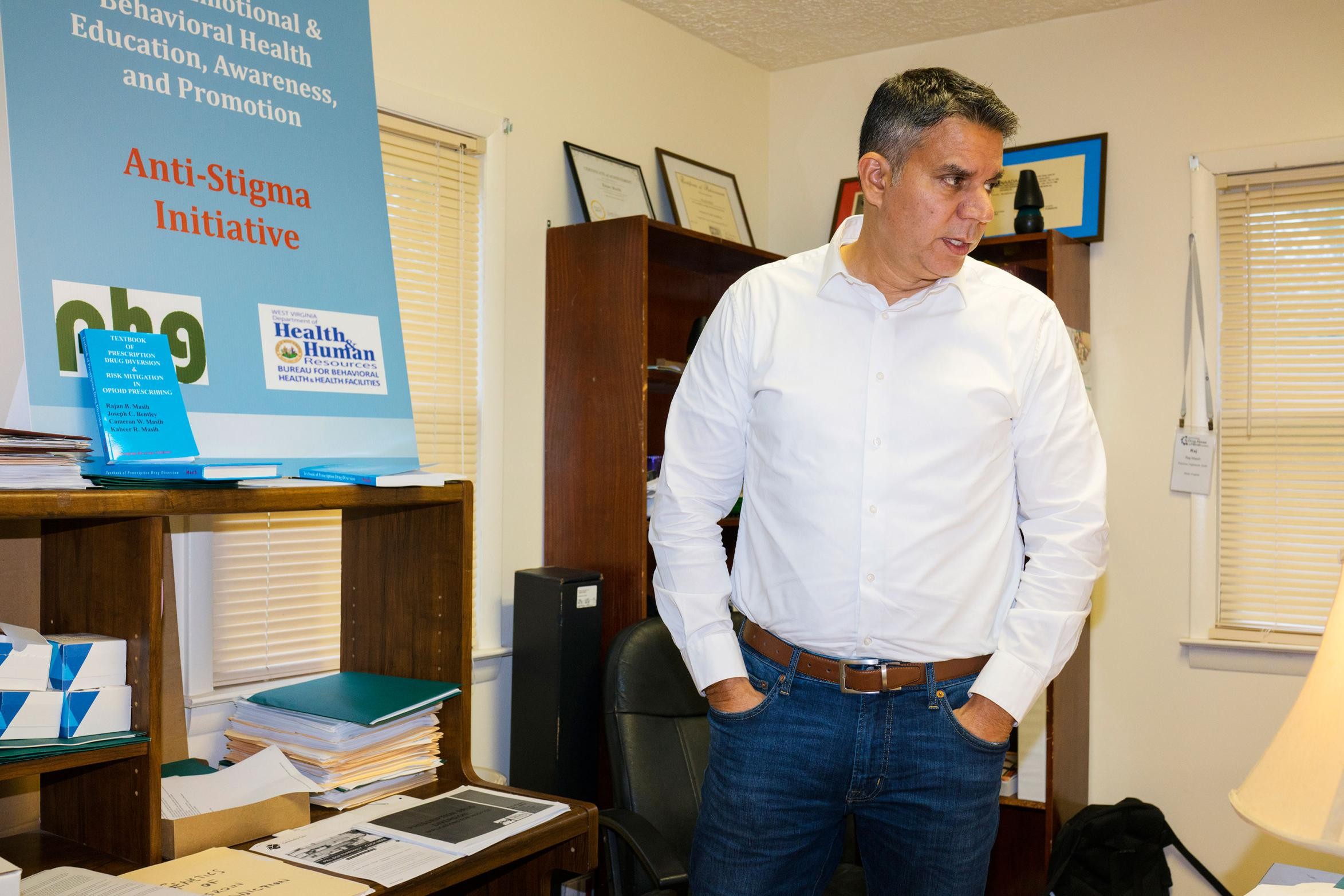
|
2000年馬辛全家從得克薩斯搬到西弗吉尼亞小鎮時,并未料想到后來的變故。剛搬過來時他在當地醫院的急診室工作,醫院規模不大,一座磚石建筑,跟南北戰爭紀念館同在一座小山上。馬辛父親是印第安醫生,母親則是英式主婦,一家人就此在只有2500人的彼得斯伯格定居。以前馬辛很喜歡豪車,他有一輛保時捷,一輛悍馬,還有一輛馬自達敞篷車。他喜歡追求刺激的活動,例如印地賽車和用AK-47打獵。 即便偶有不滿意之處,但總體來說馬辛喜歡在彼得斯伯格的生活。他勸兄弟拉維也搬了過去。他還教小朋友踢足球。別人看來他是個稱職且關心人的醫生。 2007年,馬辛的兄弟在附近的穆爾菲爾德開了一家急診診所兼日光浴沙龍。地址距離當地最主要的雇主都很近,包括火雞肉廠Pilgrim’s Pride,一家美國Woodmark家具廠,而且診所里配備了全套設備,從手術吸泵到創傷處理室一應俱全。后院甚至還有直升機停機坪。 這個美國夢距離實現只有一個問題。馬辛對氫可酮上癮了,氫可酮是一種強效止疼藥,例如維柯丁Vicodin和Lortab。他上癮是從2004年開始的,一次印地賽車中他背部受傷。他發現找不到人替第二天的急診班氫可酮,就去醫院庫房吃了一劑。吃完感覺特別好,不僅身體的疼痛消失不見,工作中經常困擾的疲憊倦怠感也一掃而光。“所有煩惱煙消云散,”他說。 后來他一直偷偷吃藥,劑量越來越大,也更加頻繁。他也深知自己在墮落,告訴自己要節制。每天他都發誓第二天戒掉,但到了第二天總能找到理由繼續吃藥。有時能控制住“戒掉”,沒幾個小時就會感覺極其糟糕而且身體很虛弱。很快他就吃完了醫院的庫存,于是開始頻繁給朋友和家里其他人開處方,從當地各種藥房買藥,開來的藥當然都是自己吃了。 |
Masih didn’t know what to expect when he moved his family from Texas to this corner of West Virginia in 2000. He relocated there to run the emergency room in a local hospital, a small brick building that shares a hill with a Civil War memorial site. The son of an Indian surgeon and a British homemaker, Masih stuck out in Petersburg, a town of 2,500. He had a taste for flashy cars—his fleet included a Porsche, a Hummer, and a Mustang convertible—and thrill-seeking hobbies like IndyCar racing and hunting with an AK-47. But even if he was something apart, Petersburg suited Masih. He convinced his brother Ravi to move there as well. He coached youth soccer. He earned a reputation as a good and caring doctor. In 2007, the Masih brothers opened an urgent care clinic atop a tanning salon in neighboring Moorefield. It was strategically close to the area’s major employers—a Pilgrim’s Pride turkey plant, an American Woodmark factory—and it was outfitted with all the trappings of an ER, from surgical suction pumps to a trauma bay. There was even a helipad out back. There was just one problem with this American dream. Masih was addicted to hydrocodone, the powerful opioid in pain medicines like Vicodin and Lortab. His addiction began in 2004, when he hurt his back in an IndyCar wreck. When he couldn’t find someone to cover his ER shift the next day, he turned to the hospital’s supply room and took a sample of the drug. He felt amazing on it—not only unburdened of his physical pain, but also of the fatigue and burnout he typically felt on the job. “Everything evaporated,” he says. He kept taking the samples, only in higher doses and more frequently, and while he knew he was on a slippery slope, he told himself he was in control. He vowed each day that he’d quit the next. But then, inevitably, he found a reason to take the drugs again. When he did manage to “quit,” he experienced the horrible and debilitating sensations of withdrawal within a few hours. He quickly ran through the hospital’s samples and began writing prescriptions for his friends and family members—all of which he’d get filled himself at the area’s various pharmacies. |
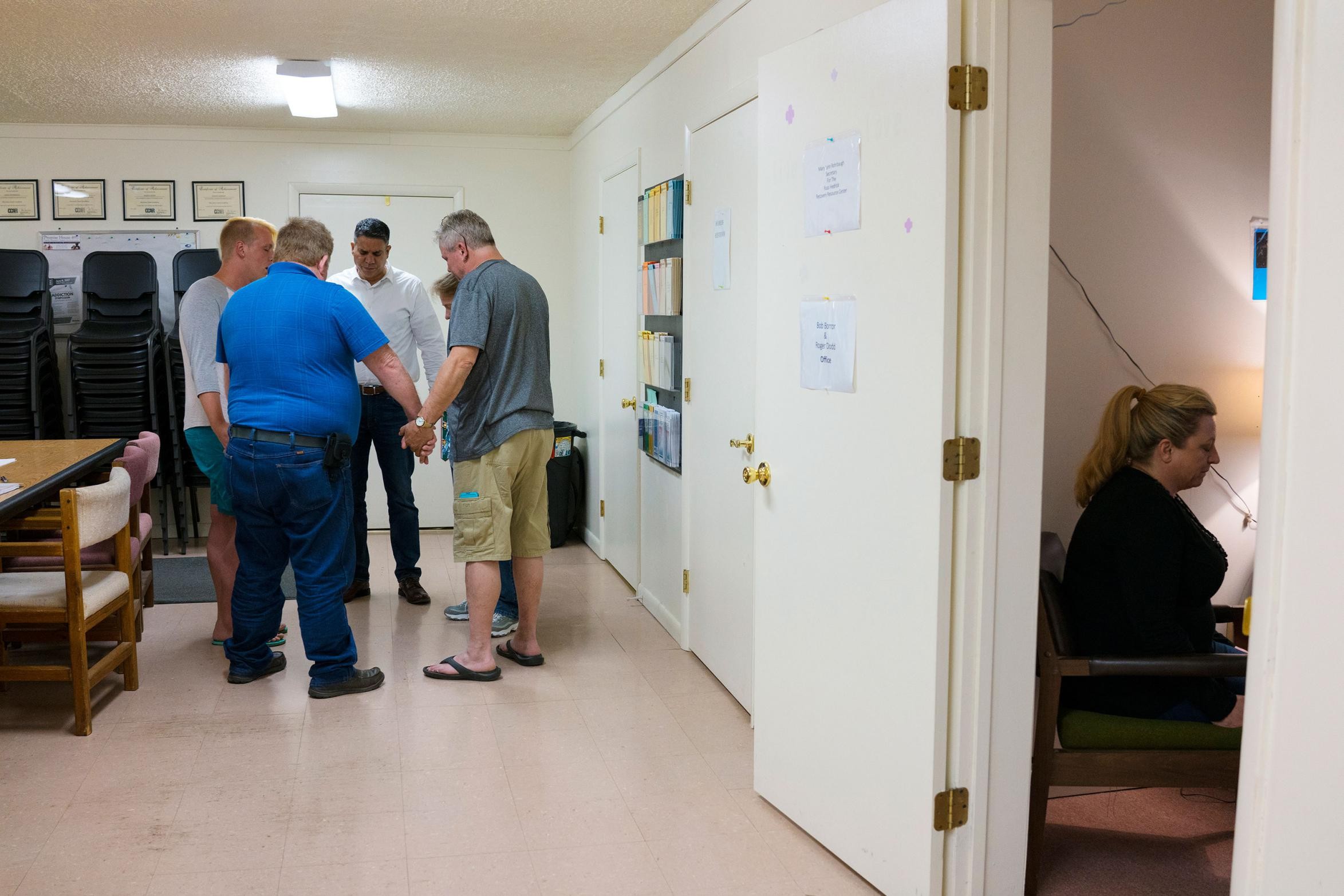
|
秘密和恥辱感讓他飽受折磨。“開車的時候都在想,‘從哪能多開一張處方?’我真的很想擺脫那種狀態。” 一邊深受藥癮折磨,馬辛還繼續行醫。在氫可酮作用下,他總是感覺將醫學玩弄股掌之上,精力充沛而且超級能干。開處方時他的標準也變得十分放松,經常輕易給別人開止疼藥之類強效藥物。他經常隨意地在處方上蓋上“去JUDY’S開藥”。“我開處方的標準非常低,”他告訴我。“極其隨意,真的。” 事情終于在2009年8月敗露。一群特警闖進馬辛的診所,把他銬在椅子上,搜查了所有文件。他被關進監獄,沒過幾天就想自殺,受到上帝感召之后下決心戒除藥癮。法院宣判他不當開具管制藥品處方的罪名成立時,他反而感覺輕松。刑期是48個月。 馬辛想清楚了要從頭開始,但西弗吉尼亞周北部檢察院辦公室并未簡單放下這個案子。他們覺得這條線索背后沒準能釣到大魚。 檢察院辦公室位于惠靈市,一座慵懶且風景如畫的小鎮,就在與俄亥俄州交界的南部。很多年來這個辦公室一直積極追蹤濫用止疼藥危機背后的黑手。但收效不大。危機仍在蔓延。 |
His secret and the shame of it exhausted him. “I’d be driving and thinking, ‘Where am I going to get my next script from?’ I so badly wanted to be out of it.” Even while trapped in this cycle of addiction, Masih continued to practice medicine. Indeed, on hydrocodone, he felt at the top of his medical game, energized and hypercompetent. He also became very lax in doling out powerful narcotics like the painkillers that had him so hooked. He’d send patients away with a prescription rubber-stamped with the words FILL AT JUDY’S. “My threshold for prescribing was very low,” he tells me. “I prescribed recklessly. I did.” It all caught up with him in August 2009, when a SWAT team burst into Masih Medical and handcuffed him to a chair while they searched his files. He was hauled to jail where in a few days’ time he says he contemplated suicide, found God, and resolved to get clean. By the time he pleaded guilty to one count of misprescribing a controlled substance, he felt free. He was sentenced to 48 months in prison. Masih might have been ready to start over, but the U.S. Attorney’s Office in the Northern District of West Virginia hadn’t quite let go of his case. They thought it might lead to something bigger. The office, which is based in Wheeling, a sleepy and picturesque town just south of the Ohio border, had for years been aggressive in going after the bad actors involved in the region’s opioid crisis. But it seemed to make little difference. The epidemic raged on. |

|
阿蘭·麥格尼格爾是當地民事法庭助理檢察官,他認為應對處方藥瘋狂濫用需要全盤戰略,也是他經常用來處理醫療詐騙的方法:找到守門人。有些人任由馬辛違法開具處方,還有些企業將越來越多藥品送往西弗吉尼亞。“要阻斷犯罪鏈條,”他說。 這項策略絕非僅在惠靈適用。本世紀初隨著網絡售藥興起,濫用止疼藥開始蔓延,美國緝毒局就考慮過如何監管邊境醫藥供應鏈。緝毒局認為藥品經銷商是全國醫藥行業的關鍵,要阻止止疼藥濫用問題就得抓經銷商。事實上,根據法律要求藥品經銷商本就應該提供協助。 相關法律就是已有數十年歷史的管制藥品法案,要求麥克森之類的批發商設立系統檢測并防止出現藥品銷售“偏離正軌”,或是未經許可使用處方藥。出現“可疑訂單”經銷商要向美國緝毒局匯報,包括訂單規模、頻次異常,或是有違正常模式。 |
To Alan McGonigal, an Assistant U.S. Attorney in the district’s civil division, the rampant abuse of prescription drugs required a more holistic strategy, one that he had often used in prosecuting health care fraud: Find the gatekeepers. Someone had been filling Masih’s many illegitimate scripts, and some company had been sending more and more drugs to rural West Virginia. “We had to stop the flow,” he says. That strategy wasn’t unique to Wheeling. The DEA had begun contemplating how it regulated the broader pharmaceutical supply chain back in the mid-2000s as the online pharmacies flourished and the opioid epidemic took root. The DEA viewed distributors—the nation’s pharmaceutical fire hose—as key to its efforts to stop criminal misuse of pain pills. By law, in fact, it’s something distributors are required to help prevent. That law is the decades-old Controlled Substances Act, which requires wholesalers like McKesson to maintain a system to detect and prevent “diversion,” or the nonsanctioned use of prescription drugs. Distributors are required to report any “suspicious orders”—those of unusual size, frequency, or deviating from normal patterns—to the DEA. |
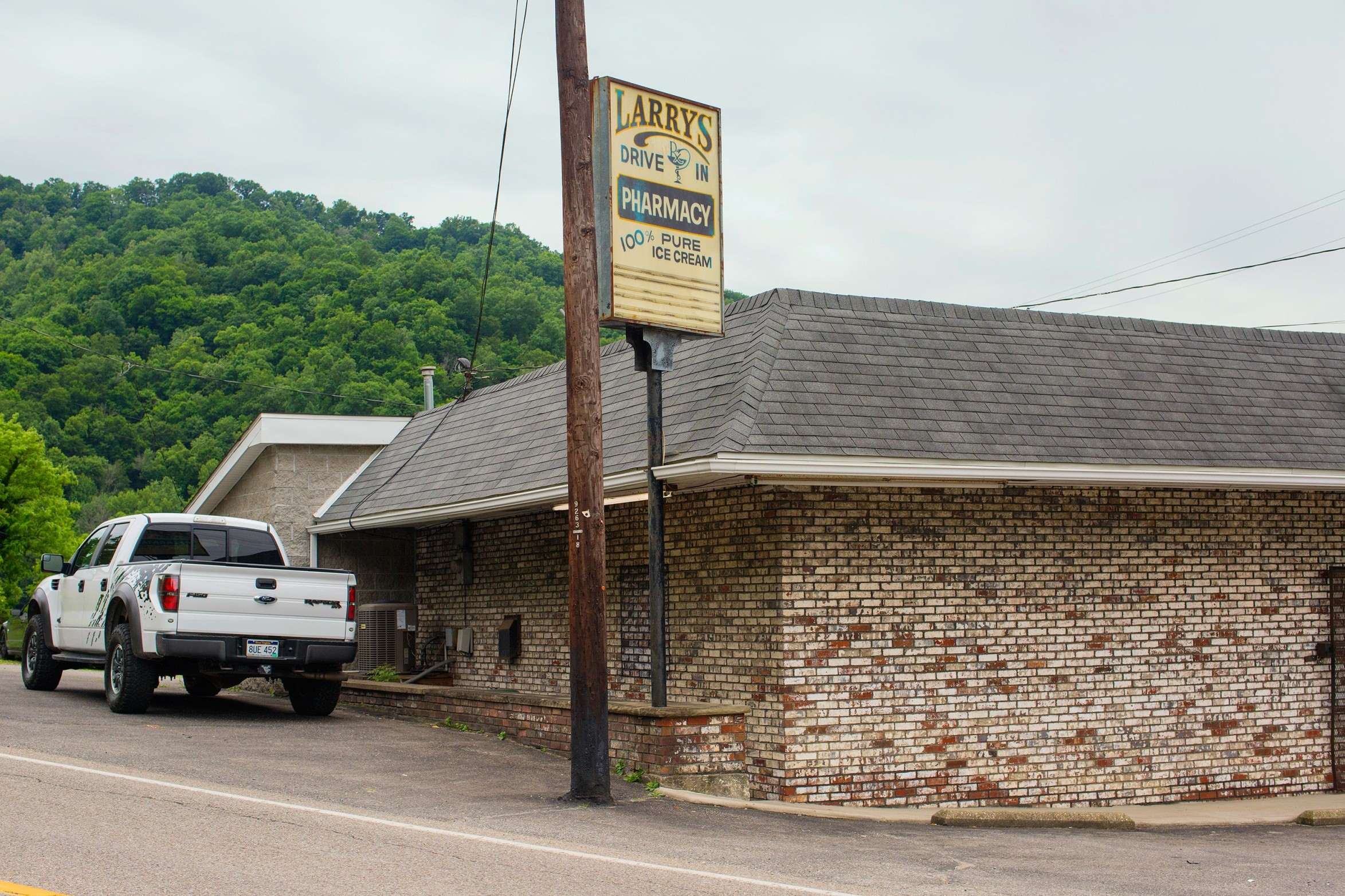
|
但2005年之前,規定并未真正執行。前律師拉里·科特表示,經銷商不會檢測可疑訂單,緝毒局也不會去調查。拉里曾為Brady & Quarles律師事務所工作,如今該事務所代表醫藥行業。藥品經銷商只是每月上交一份“過量購買報告”,經常是厚厚一份,有時就是簡單把當月收到的所有訂單列一列。 隨著處方藥濫用四處蔓延,緝毒局開始行動。2005年秋天,美國緝毒局流通管理辦公室啟動了“經銷商行動”,主要為了強調批發商的法律責任,明確藥品濫用問題的嚴重性。之后的2006年和2007年,緝毒局又單獨發了三封信提醒經銷商應付的責任。信中不僅指出全國面臨處方藥濫用蔓延的嚴重問題,還明確提出了期望,希望相關單位“切實了解客戶”,例如采用盡職調查方式確保藥房和藥劑師正確行事,一旦發現可疑訂單要及時匯報和加以限制。 但經銷商對新規定并不十分買賬。行業認為,這種調查工作超出了合理范圍:藥品經銷商的工作就是將食品藥品管理局批準的藥物送到在緝毒局注冊的藥房,經由職業醫生開處方給病人。在他們看來,讓藥品經銷商判定某個客戶或某個訂單是否合法,等于讓他們介入臨床決策。此外,經銷商對藥房的管制藥品使用也不會完全掌握,只知道送貨情況。 還有很多人抱怨緝毒局的規定太不明確或太模糊,很多抱怨其實很有道理。2016年,緝毒局主管恰克·羅森伯格承認對批發商的處理有些“模糊”。 馬辛在監獄里服刑,緝毒局正緊鑼密鼓地布置執行計劃。根據緝毒局的檔案,馬辛的濫用藥物處方并非憑空發生。緝毒局認為有人協助,也有人慫恿馬辛。最明確地說,馬辛的同謀包括彼得斯伯格商業街上連續三代家庭經營的藥店Judy’s,另外一個就是該藥房主要供應商,麥克森。 這就是2012年犯罪檢舉人和緝毒局探員向麥格尼格爾匯報的內容。麥格尼格爾批準詳查。 彼得斯伯格沒幾家藥店。馬辛大部分需要止疼的病人都會去Judy’s開藥,他自己也經常早上過去取藥。這種關系在麥格尼格爾看來有些可疑(另外值得懷疑的是Judy’s最近在穆爾菲爾德新開了一家店面,離馬辛的診所很近)。檢察官感覺小鎮上這家藥店有些不對勁。 “在這種小鎮上住,肯定什么事都知道,”馬格尼格爾說。他身材修長,脾氣溫和,偶爾有些冷幽默。“要說這家藥房不知道馬辛做了些什么,我可不相信。” |
But until 2005, these rules had never really been enforced. Distributors generally didn’t identify suspicious orders and the DEA didn’t investigate them, says Larry Cote, a former lawyer for the agency who now represents the industry at the firm Brady & Quarles. Instead, wholesalers were in the habit of submitting monthly “Excessive Purchase Reports”—thick files that sometimes included every order a wholesaler had processed during the period. With prescription drug abuse spreading, the agency attempted a reset. In the fall of 2005, the DEA’s Office of Diversion Control launched its “Distributor Initiative,” an effort to engage with wholesalers over their legal responsibilities and the severity of the country’s diversion problem. Then, in 2006 and 2007, the DEA sent three separate letters reminding distributors of their obligations. Noting that the country faced epidemic levels of prescription drug abuse, the letters also contained more explicit expectations that registrants “know their customers”—i.e., engage in due diligence to ensure pharmacies and dispensers were aboveboard—and that they report and refrain from shipping suspicious orders. This new guidance was not well received by the distributors. As the industry saw it, this sort of investigative work fell beyond their purview: They were in the business of moving FDA-approved drugs that had been prescribed by licensed physicians to DEA-registered pharmacies. Tasking them with determining whether or not a particular customer or order was legitimate was, in their view, asking them to meddle in medical decision-making. Plus, distributors don’t have full visibility of a pharmacy’s orders of controlled substances; they only know what they deliver. There were plenty of other complaints that the DEA’s guidance was unclear or too vague—claims that proved to have some merit. In 2016, DEA administrator Chuck Rosenberg conceded the agency had been “opaque” in dealing with the wholesalers. By the time Masih was in prison, the DEA had begun aggressively ramping up enforcement. And by the agency’s book, Masih’s criminal overprescribing hadn’t happened in a vacuum. He’d been aided and abetted, as they saw it, by the pharmaceutical supply chain. More specifically, his accomplices had been a third-generation mom-and-pop outlet on Main Street in Petersburg called Judy’s Drug Store—as well as the pharmacy’s primary supplier, McKesson. That was the argument that criminal prosecutors and DEA agents made to McGonigal in May 2012. McGonigal agreed to look into it. The Petersburg area has a few pharmacies to choose from. But most of Masih’s pain patients went to Judy’s, where he also stopped some mornings to pick up medical supplies. The relationship seemed suspicious to McGonigal (as did the fact that Judy’s had recently opened a second outlet in Moorefield close to Masih’s clinic). The prosecutor was convinced that something wasn’t right about the small-town pharmacy. “There is nothing you don’t know about what is going on in these counties if you live there,” says McGonigal, who’s trim, mild-mannered, and occasionally reveals a dry wit. “The idea that this pharmacy didn’t know what Dr. Masih was about held no water with me.” |
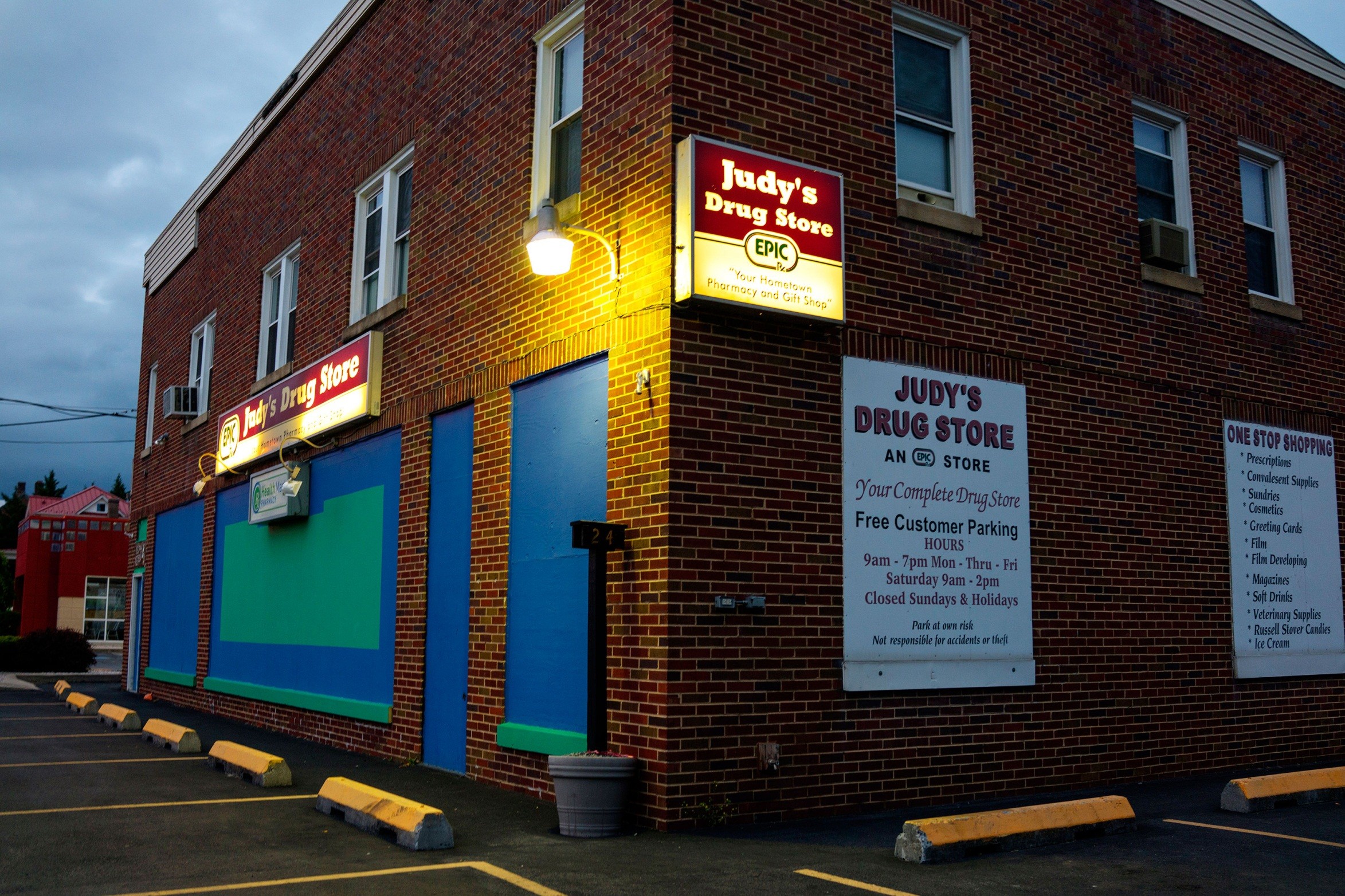
|
2014年12月,Judy’s因不當配藥與司法部達成200萬美元的民事和解協議。Judy’s未承認有不法行為,不過同意遵守更嚴格的匯報制度,現在仍在執行。Judy’s的一位代理律師表示藥劑師都認為所有配藥行為都是合法的,還指出緝毒局沒有采取行動針對藥劑師。 Judy’s最老一家店成立于1965年,直到今天仍在營業,是彼得斯伯格中心一座小磚房。(在穆爾菲爾德的店面已經關閉。)最近有個周五我路過藥店,看到一位老年女性站在收款臺后,面前是一排排列整齊的塑料袋,里面都裝好了藥等人來取。 處理完Judy’s之后,麥格尼格爾和團隊下一個目標就是麥克森的經銷中心,距離馬里蘭州蘭都弗車程三小時的經銷中西負責向Judy’s送貨。 其實緝毒局調查員林德賽·馬洛庫早就注意到麥克森在蘭都弗的經銷中心。馬克森在緝毒局駐華盛頓辦公室工作,之前就發現麥克森的可疑訂單匯報有些奇怪,因為一個都沒有。從來沒提過Judy’s,也沒提過其他幾百個送貨的藥房,雖然送往該地的處方止疼藥數量持續攀升。對任何批發商來說,一筆可疑訂單都沒有也不太正常。但麥克森真這么干了,還是全國最大的藥品經銷商。(后來經過仔細檢查記錄,緝毒局發現了好些漏掉的報告。) 麥克森可疑訂單報告的明顯缺失讓人想起之前一次調查。當時調查內容是麥克森向六個地區的小型家庭客戶運送過量氫可酮和其他管制藥品,客戶服務對象是網絡藥店。麥克森并未報告相關可疑訂單。2008年麥克森跟司法部達成1325萬美元的和解協議,但沒有承認違法行為。但當時緝毒局代理負責人米歇爾·雷昂哈特強烈指責了麥克森的行為:“麥克森公司推動了全國處方藥濫用問題的爆發性增長。” 2008年的和解協議中還要求麥克森打造有效的防控系統,確保以后不再犯同樣的錯誤。所以當年麥克森啟動了管制藥品監控項目(CSMP)。三層系統中,麥克森每類客戶每月購買管制藥品都有相應標準。如果超過標準,訂單會遭屏蔽而且引發審核流程。如果導致超過標準的原因很緊急,麥克森會提供藥品并且在特定情況下會提升標準;如果沒有合理原因,該訂單會轉往當地的合規官員。如果合規官認為訂單可疑,訂單將轉回麥克森的企業合規團隊。如果該團隊同樣認為訂單可疑,麥克森將匯報給緝毒局。 不過,馬洛庫審查緝毒局處理蘭都弗經銷中心的案例時發現,很明顯麥克森的合規系統沒起到作用。2011年7月,她要求麥克森提供20分左右有關可疑藥房的資料。當年冬天,麥克森顯然也意識到出了問題;很短時間里,麥克森蘭都弗經銷中心就向緝毒局提交了318份可疑訂單,設計之前的月份和星期。政府則認為對于如此大規模的經銷中心,可疑訂單的數量太少了,而且匆忙補交顯得仿佛承認有問題。 麥格尼格爾和馬洛庫當時都不知道,但當時全國其他地方也在進行類似調查。另一起位于科羅拉多州奧羅拉,麥克森在當地的經銷中心也是2008年和解協議中提到過的。2012年3月科羅拉多經銷中心有一次引起檢察官的關注,當時該經銷中心向緝毒局匯報了一些可疑訂單,都是關于同一個藥房,這也是2009年以來公司首次提交可疑訂單。 不管在蘭都弗還是奧羅拉,兩地經銷中心都發出了不少管制藥品。政府報告顯示,兩家中心都沒想過訂單“可不可疑”,也沒提醒緝毒局注意。 合規文件透露了很多信息。文件顯示麥克森管理合規項目態度很隨便。藥房觸及標準后,經銷中心總是很容易就能通過審核流程。客戶需要氫可酮的理由經常很模糊,而且毫不可信——“可以提升客流量”;“增加生意”等。他們就這樣拿到了藥。 |
In December 2014, Judy’s reached a $2 million civil settlement with the Justice Department for claims of improper dispensing. The pharmacy, which did not admit to any wrongdoing, also agreed to a stricter reporting arrangement, under which it still operates. A lawyer for Judy’s says the store’s pharmacists believed they were filling legitimate prescriptions, and points out that no DEA enforcement action was ever taken against the pharmacists. The original Judy’s remains in business today, operating as it has since 1965, out of a brick building in the heart of Petersburg. (Its Moorefield location has closed.) On a recent Friday afternoon when I stopped in, an elderly woman stood ready at the cash register in front of a row of neatly hung plastic bags, all filled with prescription medications ready for pickup. Having dealt with Judy’s, the next target for McGonigal and his team was the McKesson distribution center, three hours away in Landover, Md., which delivered the bulk of the pharmacy’s drugs. The Landover facility had separately landed on the radar of a DEA investigator named Lindsey Malocu. Malocu, who worked out of the agency’s Washington Field Office, had noticed something strange about McKesson’s suspicious-order reporting in her district—there hadn’t been any. Nothing about Judy’s or any of the other hundreds of pharmacies it serviced, even as the amount of prescription opioids the company delivered to the region climbed. Zero suspicious orders would be unusual for any wholesaler. But it was especially true for McKesson, the country’s biggest drug distributor. (Upon a more careful check of its records, the DEA later found a handful of reports it had missed.) The conspicuous absence of suspicious-order reports harked back to an earlier investigation of McKesson. That incident had involved six districts where McKesson had allegedly shipped excessive volumes of hydrocodone and other controlled substances to tiny mom-and-pop customers that filled orders for online pharmacies. Those suspicious orders had gone unreported by McKesson. The company settled those claims with the DOJ for $13.25 million in 2008 without admitting wrongdoing. But the DEA’s acting administrator at the time, Michele Leonhart, had offered a brutal condemnation of the company’s conduct: “McKesson Corporation fueled the explosive prescription drug abuse problem we have in this country.” The 2008 settlement agreement also dictated that McKesson develop an effective system to ensure it didn’t do so in the future. So that year the company launched its Controlled Substance Monitoring Program (CSMP). Under this three-tier system, each of McKesson’s pharmacy customers were assigned monthly threshold levels for their controlled substance orders. Orders at the threshold would block the order and trigger a review process. If the reason for reaching the threshold level was compelling, McKesson would supply the drugs and in some cases raise the threshold; if not, the matter would be passed to a regional compliance officer. If that officer deemed it suspicious, the order would be kicked up to McKesson’s corporate compliance team. If they also judged it suspicious, the company would then report the order to the DEA. When Malocu examined the DEA’s records for the Landover DC, however, it was clear to her that McKesson’s compliance system had fallen down on the job. In July 2011, she requested customer files for 20 or so suspect pharmacies that had landed on her radar. That winter, McKesson apparently realized there was a problem; in a short period of time, the Landover distribution center filed 318 suspicious orders with the DEA that covered the previous months and weeks. The government considered that number to be relatively few for a distribution center of that size and the untimely filing to be something like an admission of guilt. McGonigal and Malocu didn’t know it at the time, but across the country, there was a similar investigation taking shape. This one involved McKesson’s Aurora, Colo., distribution center, one of the facilities that had also been at the center of the company’s 2008 settlement. The Colorado facility had drawn the attention of prosecutors again in March 2012, when it alerted the DEA to a handful of suspicious orders related to one pharmacy—the only suspicious orders the facility had reported since 2009. (For more on the Colorado investigation, read Fortune's story here.) Both the Landover and Aurora facilities had shipped lots of controlled substances. Neither had done much to determine whether the orders were “suspicious,” according to the government, or to call the DEA’s attention to them when they were. The compliance files were especially revealing. They showed the company’s casual approach to administering its compliance program. When pharmacies hit thresholds, they typically breezed through the review process. Customers offered vague, flimsy reasons for needing more oxycodone supply—“increase in foot traffic”; “more business”—and they’d get it. |

|
對麥格尼格爾來說,事情很簡單。“他們不夠重視,”他說。“我敢肯定沒人惡毒地希望大街上麻醉劑泛濫。企業有時就是太追求銷售成績,忽略了可疑訂單。” 麥克森方面則表示此類指責都是莫須有,宣稱公司遵守所有法律法規。此外,麥克森一位發言人還表示“在麥克森,管制藥品銷售從來沒有跟銷售人員激勵直接掛過鉤。” 關于麥克森的調查一直在加碼。到2014年夏天,全美12個地區的檢察官都在調查麥克森是否存在違反《管制藥品法》的行為。 麥格尼格爾表示,據政府保守估計,近四年時間里麥克森在12個地區瞞報的可疑訂單數量達數萬筆。問題只剩下會罰多少。檢察官認為罰金應該天價才能起到明顯的警告作用,1.5億美元應該可疑。“一犯再犯是真正的大問題,” 麥格尼格爾表示。“不僅麥克森,別家也一樣。如果1300萬美元罰金沒讓他們吸取教訓,那就得給點別的處罰,是吧?只有高額罰金、停業和嚴格遵守規定才能根本解決問題。” 后來,麥克森重新梳理了一遍監控項目,而且據說在遵守規定方面加倍努力。 負責具體工作的是加里·博格斯,2013年加入麥克森之前曾在美國緝毒局工作四十年,在政府對麥克森啟動調查期間擔任監管事務高級主任。現在麥克森的管制藥品監管項目已有40名工作人員,其中很多都跟博格斯一樣具有監管部門背景。 此外麥克森也在技術方面投入巨大,例如完善的分析系統以識別可疑訂單。在博格斯領導下,麥克森開始投入更深入也更積極的盡職調查工作,可以一系列跟麥克森客戶相關的訴訟看出來,相關客戶都是2013年到2014年間管制藥品突然遭麥克森斷供的。 和解過程也促進了麥克森跟緝毒局的合作。雙方都表示如今合作比較順暢。(過去幾年里緝毒局藥品濫用管控辦公室與行業的協作非常深入。) 2015年,漢默格倫認為麥克森應該就止疼藥濫用問題積極與監管層展開對話。有些人可能認為麥克森只是問題一部分,但漢默格倫認為鑒于麥克森在醫療系統中的領導地位,應該為解決問題貢獻力量。所以去年他調派幾十名員工成立工作組,起草了一份白皮書,主要在華盛頓發行。文件提出六點建議。其中包括打造全國病患安全系統,該系統基于數據,幫助藥劑師和醫生實時鑒別可能存在濫用藥物風險的病人。 可能有些奇怪,但馬辛在監獄里過得很好。監獄位于西弗吉尼亞格倫威爾,監控級別為中高級,獄中人們叫他“醫生”,其他囚犯跟他講了很多如何騙醫生開出氧可酮之類處方藥的故事。人們為了弄藥無所不用其極,讓馬辛大開眼界,后來他獲得美國聯邦監獄局批準撰寫了藥物濫用如何發生的教材。(他的兒子提供了很多研究材料,他在獄中的牢友之前是海洛因販子。兩人都在書中獲得了作者致謝。)2014年馬辛因表現良好提前獲釋,當時馬辛跟團隊已經寫出了第二本手冊,內容是犯人在獄中濫用藥物。 平時不做宣傳防范藥物上癮工作時,馬辛的時間都花在跟朋友韋德·羅哈波夫合作開設的公司上,主要產品叫“猛禽”。“猛禽”是一套系統,其中包括生物識別、電子病歷,還有可錄制視頻的眼鏡,主要用來幫助醫生避免開出濫用藥物的處方。如今他正向醫學委員會推介“猛禽”。 馬辛對依法服刑心存感激,不僅僅是因為救了他一命。他不僅戒除了藥癮,而且了如果他繼續濫用藥物,可能已經因病喪命。去年馬辛發現罹患致命的血管瘤。(馬辛的父親曾因動脈瘤破裂導致后來一直癱瘓。)馬辛主要的癥狀是劇烈頭痛,他之前吃止疼藥時從來沒感覺過。2015年7月,他在西弗吉尼亞大學附屬醫院接受了微創手術,名叫WEB血管瘤栓塞系統。這是一種全新的手術,尚未獲得食品藥品監督局批準,馬辛是首批接受手術的患者。 如今馬辛健康且清醒,他表示“能重獲機會在對抗藥品濫用領域工作非常興奮,也充滿感激,今后要努力幫助更多深陷上癮癥的人們。” 再回到麥克道威爾,警長韋斯特正等著好消息。自從縣里提交了對藥品經銷商的訴訟,西弗吉尼亞好幾個縣和鎮,還有一些外地的機構也跟著提交了訴訟,例如奧克拉荷馬州的切諾基部落。三大經銷商也在忙著應訴,均表示指控沒有根據。 隨著公共醫療危機日益嚴重,議會也在詢問麥克森和同行的行為是否失當。今年5月,眾議院能源和商業委員會啟動調查,著重查藥品經銷商在西弗吉尼亞的“藥品傾銷”行為。三大經銷商都已收到質詢函,要求6月8日之前答復。 韋斯特深信訴訟會收到很大成效,至少他在努力對抗藥品濫用之災。“此刻我滿懷希望,也誠心禱告減輕人們的痛苦,不僅為西弗吉尼亞人,更是為美國各地的人們。”他表示。“這是一場大型瘟疫,值得嚴肅對待。” 本文另一版本刊登于2017年6月15日出版的《財富》雜志。(財富中文網) 譯者:Pessy 審稿:夏林 |
For McGonigal, the matter was simple. “They didn’t care enough about the issue,” he says. “I’m sure there was no malevolent desire to flood the street with narcotics. There was just too much emphasis on sales numbers and not enough with keeping an eye on suspicious ordering.” McKesson calls those unfounded allegations and says the company complies with laws and regulations. Furthermore, a spokesman says that “at no point has there ever been a direct correlation between the sale of controlled substances and incentive compensation for McKesson sales personnel.” The investigations of McKesson were multiplying. By the summer of 2014, prosecutors in 12 districts around the country were looking into possible violations of the Controlled Substances Act at McKesson distribution centers. According to McGonigal, the government’s conservative estimate is that over a roughly four-year period McKesson had failed to report tens of thousands of suspicious orders in those districts. The question was how big the penalty should be. Prosecutors thought a large penalty was needed to send a message, and the $150 million figure accomplished that. “Recidivism was a real problem,” says McGonigal. “Not only with them but with others. If they’re not going to learn from a $13 million settlement, they have to learn from something, right? Dollars and suspensions and heightened compliance arrangements are the only way it’s going to get done.” In the aftermath, McKesson has once again overhauled its monitoring programs. And by all accounts the company is redoubling its efforts on compliance. Leading the effort has been Gary Boggs, who spent four decades as a DEA agent before joining McKesson in 2013 as the senior director of regulatory affairs, in the midst of the government’s investigations into McKesson. There are now some 40 individuals dedicated to McKesson’s controlled substance monitoring program, and many of them, like Boggs, came from an enforcement background. The company has made significant investments in technology, such as more sophisticated analytics systems to identify suspicious orders. Under Boggs’ leadership, it has started doing deeper, more rigorous due diligence—a change that can be traced through a trail of lawsuits involving McKesson customers who suddenly had their controlled substances cut off in 2013 and 2014. The settlement process has had a way of bringing McKesson and the DEA together. Both sides say they’re working together productively now. (DEA Diversion Control has also made a concerted effort to engage far more with the industry in the past few years.) In 2015, Hammergren decided that it was time for McKesson to wade into broader policy conversations about the opioid epidemic. While some may see McKesson as part of the problem, Hammergren believes that his company, given its position in the health care system, might have insights to help with the solution. So last year he formed a task force of several dozen employees, and developed a white paper that McKesson is now circulating in Washington. The document offers six recommendations. Among them: the development of a National Patient Safety System, a data-driven, real-time tool to help pharmacists and physicians to identify patients most at risk of misusing medications. Odd as it may seem, Masih thrived in prison. At the medium-high security facility in Glenville, W.Va., he quickly became known as “Doc,” and his fellow inmates regaled him with stories of how they’d once scammed physicians into prescribing them oxycodone and other narcotics. Masih was blown away by the variety and ingenuity of their methods, and he obtained permission from the Federal Bureau of Prisons to write a textbook on how drug diversion happens. (His son, who sent him research, and his cell mate, a onetime heroin dealer, both earned author credits.) By the time Masih was released in 2014—early, for good behavior—the team had written a second manual on how prisoners abuse drugs in prison. When he’s not doing his addiction work, Masih devotes time to a company he started with his friend Wade Rohrbaugh to develop a product he calls “Raptor.” The system, which involves biometrics, electronic health records, and video-recording eyeglasses, is designed to help physicians prevent prescription drug diversion. Right now he’s shopping Raptor to medical boards. Masih thanks his brush with the law for saving his life—in more ways than one. Not only did he kick opioids, but he was also able to manage a personal health crisis that might have killed him if he’d been using. Last year, Masih learned he had a life-threatening aneurysm. (His father had suffered a ruptured aneurysm and was disabled for the rest of his life.) Masih’s primary symptom was terrible headaches, which he says he never felt when he was on pain meds. In July 2015, he was one of the first patients to undergo a radical, not-yet-FDA-approved, minimally invasive surgical procedure at the West Virginia University hospital with a device called a WEB Aneurysm Embolization System. Healthy and sober, Masih says he’s “thrilled and grateful to be given a second chance to work in this field helping many people suffering from the disease of addiction.” Back in McDowell County, Sheriff West is waiting for some good news. Since the county filed suit against the distributors, a number of counties and towns in West Virginia—and a few entities beyond, such as the Cherokee Nation, in Oklahoma—have followed with their own lawsuits. The big three are fighting those, too, and dispute the merits of the claims. Questions are also being asked about the practices of McKesson and its peers by Congress, where the dire public health crisis is increasingly top of mind. In May, the House Energy and Commerce Committee launched an investigation into the wholesaler industry’s “pill dumping” practices in West Virginia. The big three each received letters of inquiry, which they were required to answer by June 8. West isn’t sure the lawsuits will accomplish much, but at least he tried something to counter the opioid scourge. “I’m hoping and praying we can alleviate some of the suffering, not only in West Virginia, but everywhere across the nation just about now,” he says. “It’s a major epidemic, and it’s got to be treated that way.” A version of this article appears in the June 15, 2017 issue of Fortune. |













